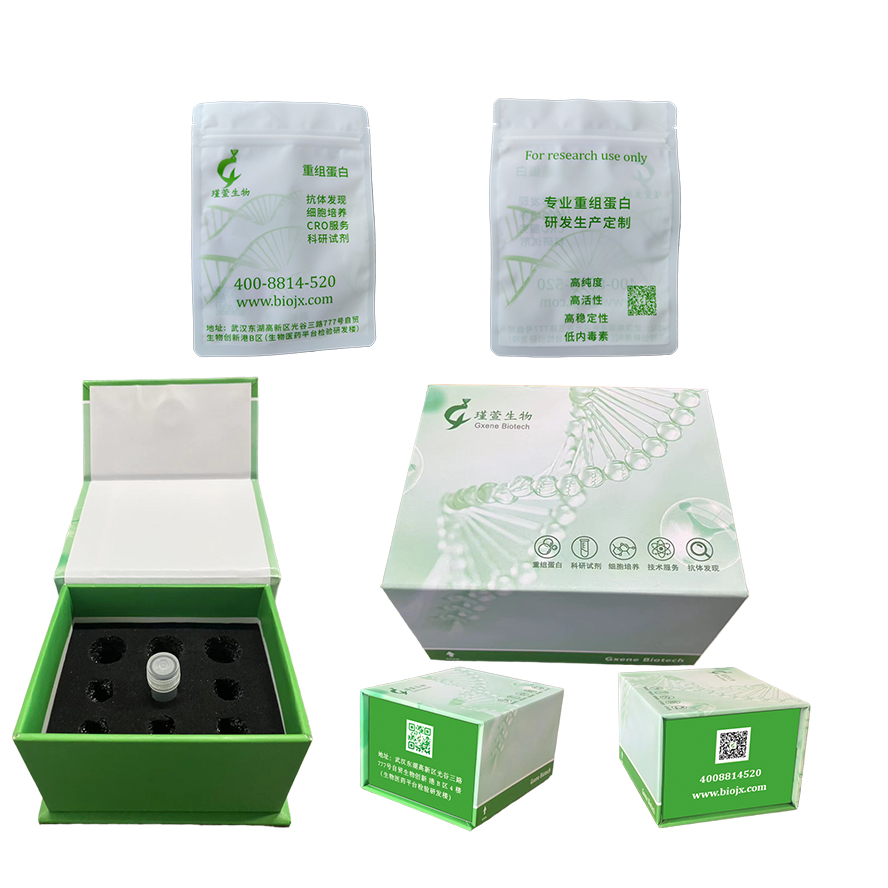


研究方向
IL-36β(IL-1F8)是IL-36家族的一个亚型,属于IL-1超家族。IL-36 beta 在单核细胞、T/B 淋巴细胞、骨髓、扁桃体、心脏、肺、睾丸、结肠、神经元细胞、神经胶质细胞中表达。
IL-36β 的氨基酸序列在不同物种中有所不同。人 IL-36 β 与小鼠的氨基酸序列同一性<40%。
L-36 beta 与 IL-36R 结合并招募辅助受体 IL-1RAcP。因此,异二聚体信号复合物使 2 条受体链的 Toll/IL-1R (TIR) 结构域非常接近,从而激活 NF-κB 和 MAPK 信号通路。但激活需要中性粒细胞颗粒衍生的蛋白酶(例如组织蛋白酶 G、弹性蛋白酶和蛋白酶-3)在 Arg5 的 N 端进行切割。IL-36β在人骨髓单核细胞和DC细胞的细胞成熟中发挥作用。IL-36β 与炎症性肠病 (IBD) 的发生有关。IBD 患者的血清 IL36β 水平通常较高。
IL-36β 是一种促炎因子。IL-36 beta 通过激活 NF-κB 和 MAPK 信号通路介导炎症反应。
Measured by its ability to induce IL-8 secretion in A431 human epithelial carcinoma cells. The ED50 for this effect is 1- 4.8 ng/mL.
Interleukin-1 family member 8(IL1F8) also known as IL36B, is a member of the interleukin 1(IL-1) cytokine family. IL-36 beta is expressed by keratinocytes, naïve CD4+ T cells, neurons, and glia. It is up-regulated in keratinocytes and synovial fibroblasts by inflammatory stimulation and in psoriatic lesions. IL-36 beta promotes inflammatory responses by enhancing the activation and Th1 polarization of dendritic cells and T cells. It also enhances the production of multiple pro-inflammatory cytokines, chemokines, and anti-bacterial defensin peptides by keratinocytes, synovial fibroblasts, and articular chondrocytes. IL-1 family members exert their effects through binding to receptors that belong to the IL-1 receptor (IL-1R) family.